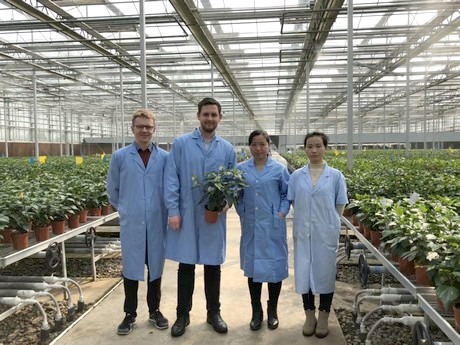
Michael Larsen of Elvira Rose, Jacob Graff at one of their Chinese HibisQs® growers.
Ban of coal
In China, the use of coal has been banned in several industries and in some regions the ban is more strict. Jacob explains that bans are very strict in the cities along the coast line and big cities like Shanghai and Beijing that are heavily polluting the environment with their use of coal. According to him, Beijing is having the biggest problem with this ban as they use a lot of coal during the winter. "During these months it is cold and in many industries coal is used for heating. The more South you go, the warmer it gets, so less coal is needed."
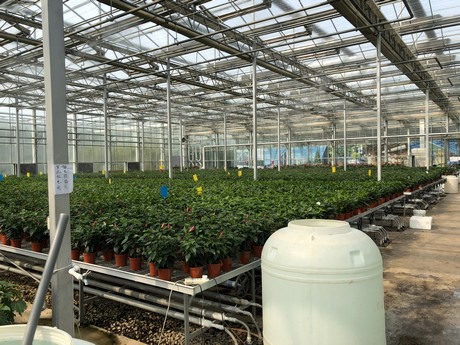
HibisQs® in the greenhouse in China.
Impact on Hibiscus growers
The use of coal is banned for the production of several crops - including the Hibiscus crop. In turn, the ban is impacting the hibiscus growers. "The hibiscus is an popular Patio crop, but also used for the celebration of Chinese New Year, which often falls in February. The majority of the production then takes place in the winter months and many growers therefore need to heat their greenhouse to keep the tropical growth environment. When they cannot use coal, they cannot produce hibiscus", explains Jacob. As a result, it is also affecting the young plant producers. "For the next season many growers hold or even in a few cases cancelled their orders for hibiscus young plants."
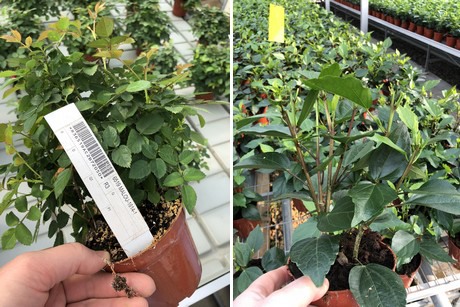
Graff's Chinese grown Q-iRose® and HibisQs®
Solution?
During Jacob's trip to China, he visited several growers, but it becomes clear that a solution to this problem is not that easily found. New energy strategy and long term investments is needed. On top of that, he discovered more reasons for the drop in orders; a decrease in demand. "In China, they love new products / things, and it can be difficult to meet the expectations year after year with the same product. At a very early stage we had great success in China, but now the novelty interest / effect of the hibiscus might be worn off a bit. So, to keep growing successfully with our Chinese HibisQs® growers – we must continue to work hard to keep introducing new eye catching and improved varieties. In the coming months, we will be closely in touch with our distributors and growers not only to find a solution for the coal problem, but also, together with them, working on a long term solution to keep the demand for hibiscus alive, and hopefully growing again."
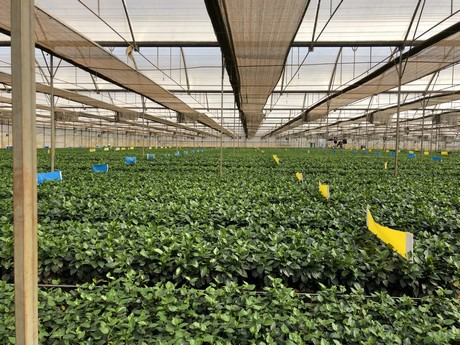
HibisQs® in a greenhouse in Vietnam
Increase presence in Asia
Even though, this situation in China, Graff is increasing its sales in China and Asia. Soon, they will start supplying their growers with their own bred poinsettias and dipladenias. "We have seen a correlation between hibiscus, poinsettia and dipladenia growers. Close to 80 percent of the hibiscus growers globally also grow poinsettias and close to 30-40 percent of the hibiscus growers also do dipladenias. For this reason, we decided to start breeding in this direction as well." They have done several trials at growers and both the growers and Graff were pleased with the growth and quality of the crop. For the coming season, they will now start to offer and supply growers in Asia with these two new varieties.
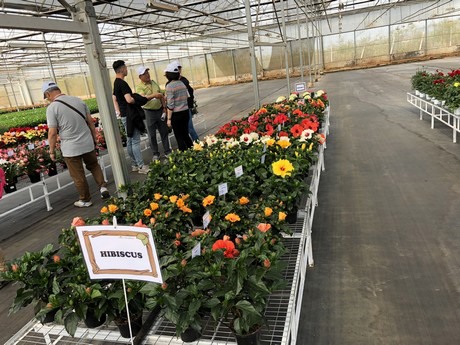
HibisQs® in the greenhouse at one of their Vietnamese growers.
"We want to be more a total supplier, so in the summer hibiscus and poinsettia in the winter. We will supply less growers, but we will get a closer connection with them and supply them more varieties. So, we are aiming to grow slowly but steadily, market by market and grower by grower."
For more information
Graff Breeding A/S
Jacob Graff
Email: [email protected]
www.graff-breeding.com










